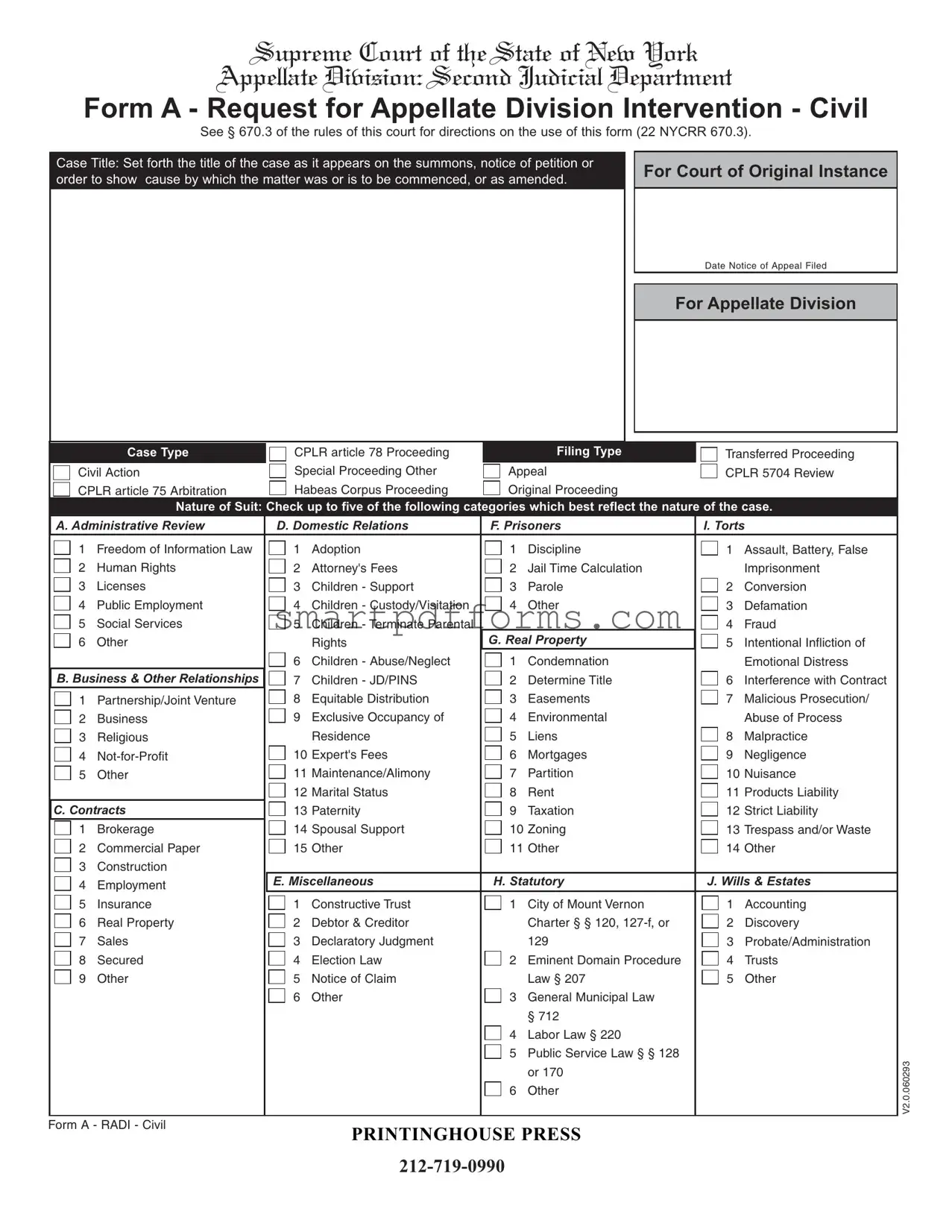Blank Request Appellate PDF Template
The Request Appellate Form is a critical document utilized within the Supreme Court of the State of New York's Appellate Division: Second Judicial Department. It serves as a formal request for intervention by the Appellate Division in civil cases, guiding applicants through providing comprehensive case details, including the nature of the appeal, parties involved, and attorneys representing the case. Individuals seeking appellate review or intervention are directed towards this form to initiate their process, as outlined in § 670.3 of the rules of this court. If you're looking to appeal a decision or request appellate intervention, click the button below to fill out the form and start your process.
Make This Document Now






